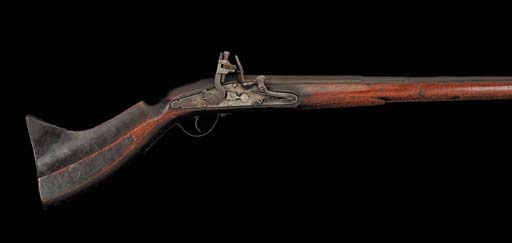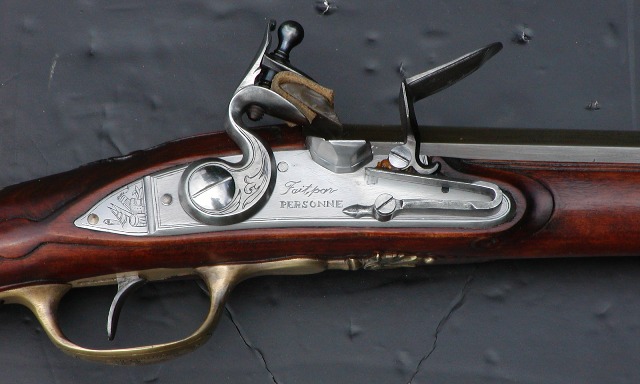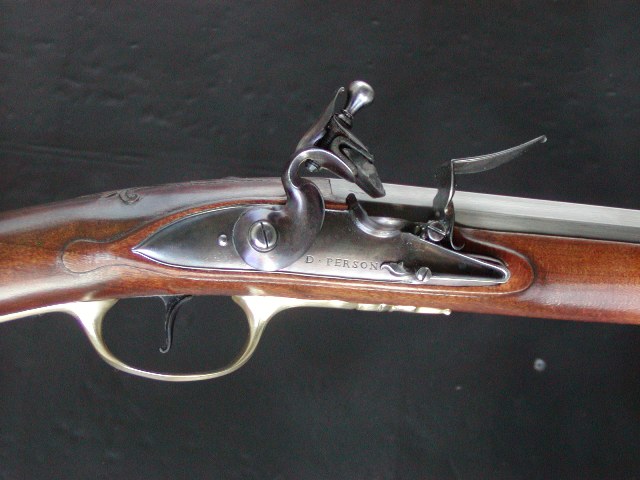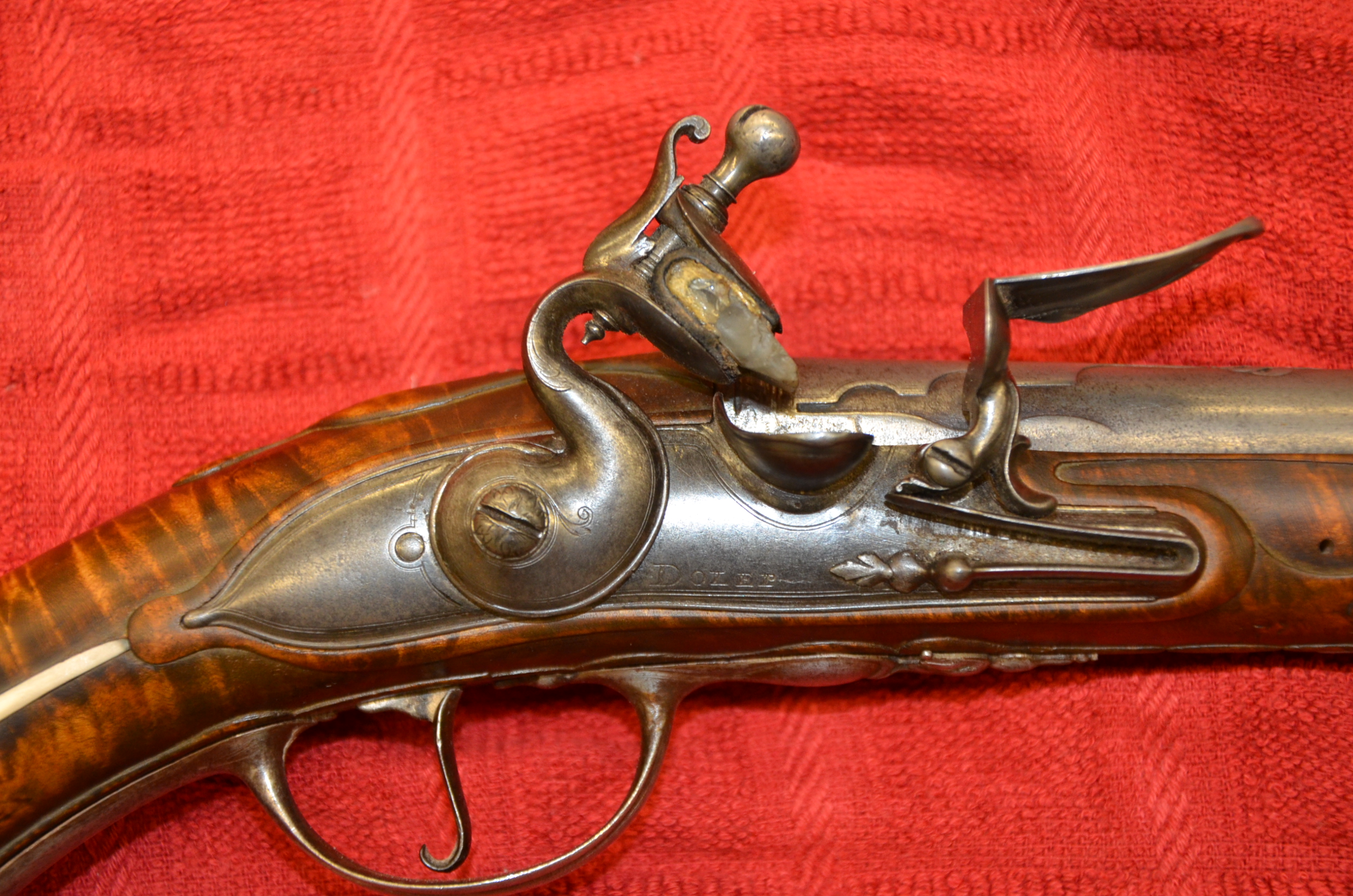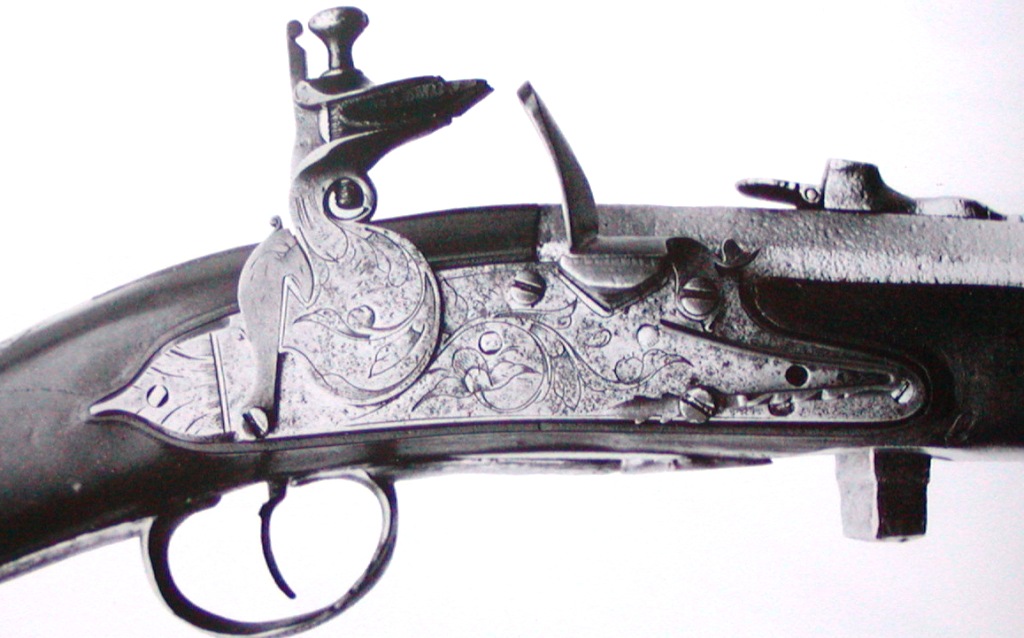Apparently it isn't period for a gun used in New England in the late 1600s-early 1700s to have a frizzen bridle. Since that is the time period I am interested in reenacting, I purchased a gun that, according to the description page, fit the period. (
K-11 Early English Trade Gun)
I'm sorry you didn't get what you thought you were ordering. There's been another
recent post by someone that wasn't satisfied with a gun they ordered from Sitting Fox, too.
It looks like Sitting Fox substituted an L&R "Queen Anne" lock for the R.E. Davis English fowler flintlock they mention in their description. The R.E. Davis lock does not have a frizzen bridle.
Unfortunately, that's not the end of it. The gun that Sitting Fox has pictured and described as an "early 1700’s version of the English trade gun" is not what it is represented to be. That particular style trade gun was one the British started making, possibly during, but definitely after the F&I War (Hanson & Harmon 2011: 202-205). The British likely gifted and traded these guns to Indians that had been supplied by the French and preferred certain French characteristics such as the shape of the butt and the finial on the butt plate extension. The fact that this style of trade gun has a serpent sideplate with cast-in scales very much like what was used on the Northwest trade gun definitely dates it post-1750 as that style of serpent sideplate did not exist before 1749.
We really don't know much about the English trade guns made in the late 17th and early 18th century. We have some vague descriptions from period documents and archeological artifacts, but these are just the metal parts of the guns. Practically no known trade guns have survived from the 17th century. Below is a line drawing of what S. James Gooding believes the Hudson's Bay Company were trading to Indians in the late 1670s and early 1680s (Gooding 2003: 39). This trade gun had a flat lock.
In 1681, the HBC asked gunsmith Samuel Oakes to make up a new pattern trade gun. The Oakes' pattern trade gun had a round lock, a stylized serpent sideplate, and a trigger guard that was common on English guns of the period (see below).
Samuel Oakes sideplate
Samuel Oakes trigger guards
"For a gun used in New England in the late 1600s to early 1700s," you might want to study Tom Grinslade's
Flintlock Fowlers: The First Guns Made in America. His New England Fowler #1 is probably close to a trade gun that would have been used in New England late in the 17th century.
English Club Butt Fowlers were also traded to the Indians in New England. Tom Grinsade's CB #2, CB #3, and CB #4 are probably good representations of the type common in the early 1700s. CB #4 has a flat, engraved serpent sideplate similar to what was used on the Type G or Carolina trade gun.
These English club butt guns were likely copied from the French Buccaneer guns that were also traded to Indians in the 17th and early 18th centuries.
The Sitting Fox gun shown below would be a good choice for the post-F&I War period up through the Rev War.

There are several of these guns that have survived. Most have locks and barrels marked "WILSON" and "RW", respectively. Richard Wilson was born in 1703 and apprenticed under Thomas Greene from 1718 to 1725. Wilson probably continued to work for Greene until Greene's death in 1728 and took over Greene's firm from his widow in 1730 and registered his mark, "RW", with the Gunmaker's Company in that year. Richard Wilson made trade guns for the Hudson's Bay Company from 1730-1756. His firm also made trade guns for the British Board of Trade. One of Richard Wilson's sons, William, joined the firm in 1757. William carried on the business after Richard died in 1766 and continued to use the mark "RW". William's son, also named William, took over after his father died in 1808 and kept the family firm in operation until his death in 1832. This particular trade gun was not likely made before 1730, and most probably after 1760.
T. M. Hamilton's
Colonial Frontier Guns has a detail description and pictures of one of these Wilson trade guns (Hamilton 1980: 73, 78-79). It has been personalized by an early owner with seed beads inset into the wood. Included is the date "1777".
Sitting Fox is using deceptive marketing in calling these an "early 1700’s version of the English trade gun".















